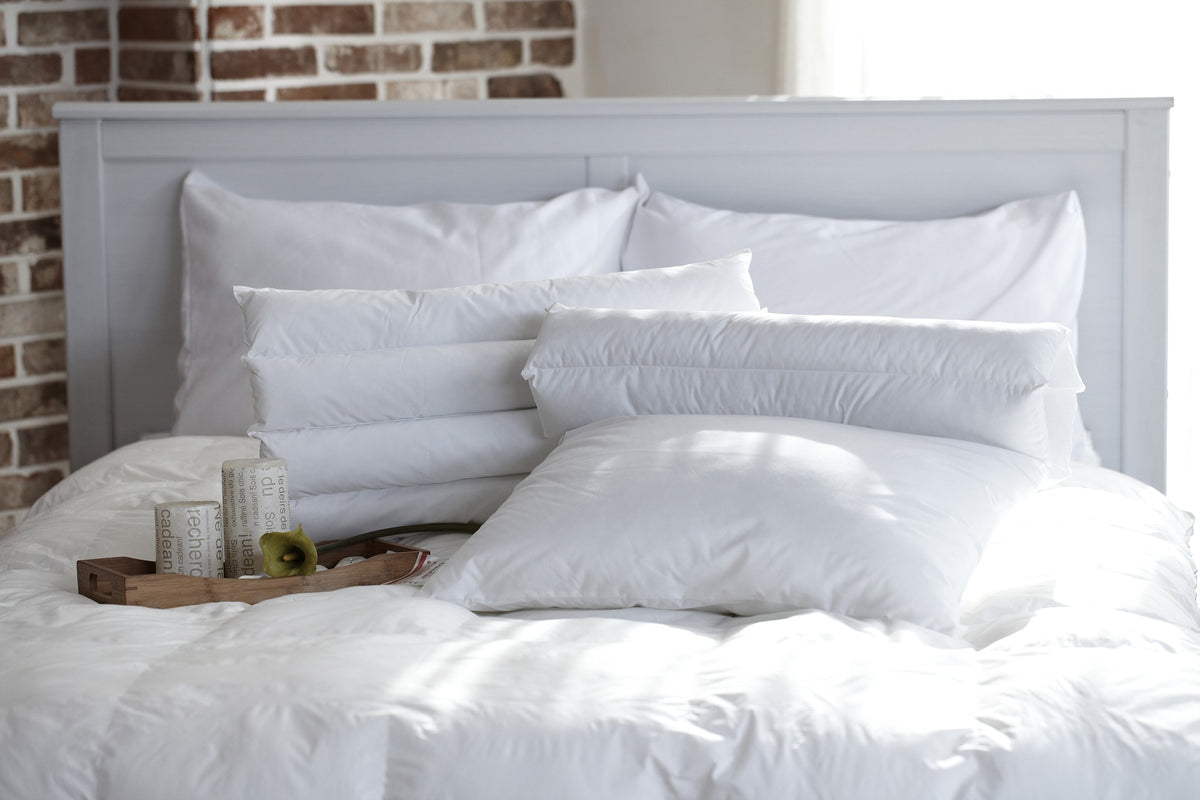

Articles
Where Were Pillows Invented
Modified: January 19, 2024
Discover the fascinating history and origins of pillows in this informative article. Explore where pillows were invented and how they have evolved over time.
(Many of the links in this article redirect to a specific reviewed product. Your purchase of these products through affiliate links helps to generate commission for Storables.com, at no extra cost. Learn more)
Introduction
Pillows are one of the most essential and universal items found in bedrooms around the world. Whether we use them for support, comfort, or simply to decorate our beds, pillows play a significant role in our sleep hygiene and overall well-being. But have you ever wondered where pillows were first invented?
Exploring the origins of pillows takes us on a fascinating journey through ancient civilizations, medieval Europe, and the development of modern pillow designs. From ancient Egypt to Renaissance Europe, the history of pillows is rich with cultural significance and technological innovations.
In this article, we will delve into the history of pillows, uncovering the ancient civilizations that first utilized these comfort objects, and examining how they have evolved over time. So, let’s embark on our pillow-filled voyage through history!
Key Takeaways:
- Pillows have a rich and diverse history, originating from ancient civilizations like Mesopotamia, Egypt, India, China, Greece, and Rome. Their evolution reflects cultural, spiritual, and technological influences, shaping the comfort and symbolism of pillows today.
- The Industrial Revolution and Western influence propelled pillows into the modern era, introducing standardized sizing, innovative materials, and global accessibility. From memory foam to specialized designs, pillows continue to evolve, catering to diverse sleep needs and preferences.
Read more: Where Were Hybrid Seeds Invented
Ancient History
Pillows have a long and storied history, dating back thousands of years to various ancient civilizations. Let’s take a closer look at some of these civilizations and their contributions to the development of pillows.
- Ancient Mesopotamia: One of the earliest records of pillow use can be traced back to ancient Mesopotamia, around 7000 BC. The people of this region would use stones, wooden blocks, or even their own arms as makeshift pillows.
- Ancient Egypt: Egypt holds a significant place in the history of pillows. The ancient Egyptians believed that pillows were not only meant for comfort but also had a spiritual significance. Pillows were seen as a symbol of wealth and were often decorated with intricate embroidery and fancy designs. The wealthy Egyptians even had pillows made of stone, while the commoners used softer materials like reeds or palm leaves.
- Ancient India: In ancient India, pillows were known as “ushnisha,” and they were primarily used by royalty and nobility. These pillows were made of precious materials like silk, satin, or gold. They were often elaborately embroidered and featured decorative elements such as tassels and jewels.
- Ancient China: Chinese culture has a long history of pillow use. During the Tang Dynasty, around the 7th century, pillows became more common among the general populace. They were typically made of porcelain, bamboo, or porcelain-covered wooden frames, and were filled with materials like rice husks or leaves.
- Ancient Greece: In ancient Greece, people used pillows made of stone or wood, similar to the earlier civilizations. However, as Greek society evolved, pillows made of cloth, feathers, or even straw became more common.
- Ancient Rome: The Romans followed the Greek tradition of using various materials for pillows, including feathers, wool, and even horsehair. Pillows were seen as a symbol of social status, and wealthy Romans often had multiple pillows on their beds.
These ancient civilizations paved the way for the pillow culture we know today. The use of a pillow for comfort and support became increasingly prevalent as societies advanced and developed new technologies. However, it wasn’t until the medieval period and the Renaissance in Europe that pillows began to resemble the ones we are familiar with today.
Ancient Mesopotamia
Ancient Mesopotamia, located in present-day Iraq, holds a significant place in the history of pillows. The people of this civilization were among the first to utilize pillows for comfort during sleep.
In the early years of Mesopotamian civilization, pillows were not the soft and plush objects we are accustomed to today. They were often made from stone, wood, or other hard materials. These primitive pillows were primarily used to elevate the head and provide support while sleeping.
The Mesopotamians believed that elevating the head during sleep had several benefits. It was thought to help prevent snoring, as well as reduce the risk of inhaling insects or other irritants that could disturb sleep. Additionally, elevating the head was believed to improve blood circulation and promote overall well-being.
Over time, the design of Mesopotamian pillows evolved. Instead of using hard materials like stone or wood, they began using softer materials such as reeds or palm leaves. These materials were woven together to create a more comfortable and supportive sleeping surface.
Initially, pillows were primarily used by the elite and wealthy class in Mesopotamian society. They were seen as a luxury item that symbolized social status and prosperity. The poor and commoners often slept without pillows or used makeshift items like folded clothing or cloth instead.
As the Mesopotamian civilization advanced, so did their pillow designs. Pillows made from softer materials like wool or feathers became more common. These pillows were more comfortable to use and provided better support for the head and neck during sleep.
The Mesopotamians also believed in the spiritual significance of pillows. They believed that pillows could act as a bridge between the physical and spiritual realms. They often adorned their pillows with intricate embroidery and decorative elements to enhance their spiritual connection during sleep.
Ancient Mesopotamian pillows not only served a practical purpose but also held cultural and symbolic value. They were an essential element of the sleeping arrangements and were often included in burial practices as well.
The innovations in pillow design and cultural beliefs surrounding them in ancient Mesopotamia laid the groundwork for future civilizations to further develop and refine the concept of pillows. Through trade and cultural exchange, these pillow designs spread to other parts of the world, shaping the history of pillows as we know it today.
Ancient Egypt
Ancient Egypt, known for its remarkable pyramids and pharaohs, also played a significant role in the history of pillows. Pillows in ancient Egypt had both practical and symbolic importance, reflecting the unique culture and beliefs of this civilization.
In ancient Egypt, pillows were not only used for comfort but also held spiritual significance. They were believed to protect the sleeper and provide a connection between the physical world and the divine. As a result, pillows were often decorated with intricate embroidery, symbols, and amulets to enhance their spiritual power.
Unlike the early pillows of Mesopotamia, Egyptian pillows were much softer and more comfortable. They were often made using materials such as linen or cotton, which were filled with feathers, reeds, or even chaff. The wealthy and nobility in Egypt also had access to more luxurious pillows filled with down feathers or even fragrant herbs.
The design of Egyptian pillows was unique and distinct. They were often rectangular in shape with rounded corners, resembling the shape of a modern pillow. These rectangular pillows provided support for the head and neck while sleeping and were placed under the shoulders or side of the head rather than directly under the neck.
Pillows in ancient Egypt were considered a status symbol, reflecting one’s wealth and social standing. The richer Egyptians would have beautifully decorated and embroidered pillows, sometimes with precious stones and gold threads.
As pillows gained popularity, they became an integral part of everyday life in ancient Egypt. People of all social classes started using pillows, although the quality and luxury of the pillows varied depending on one’s status. Even slaves and workers would use simple pillows made of straw or papyrus.
Interestingly, pillows in ancient Egypt were not only used for sleeping purposes. They were also commonly used as support while sitting, especially in more formal and ceremonial settings. They would often sit on elevated platforms with pillows placed behind their backs for added comfort and proper posture.
The importance of pillows extended to the afterlife in Egyptian culture as well. Elaborate burial rites included placing pillows in tombs to provide comfort and support to the deceased on their journey to the afterlife.
Ancient Egyptian pillows were an integral part of their culture and beliefs, combining aesthetics, comfort, and spirituality. Their impact on pillow design and symbolism can still be seen today, making ancient Egypt a significant milestone in the history of pillows.
Ancient India
Ancient India has a rich and vibrant history that extends to the realm of pillows. Pillows in ancient India were not only used for comfort during sleep but also held cultural, social, and religious significance.
In ancient India, pillows were known as “ushnisha” or “utkataka.” The use of pillows in Indian society was primarily associated with the nobility and royalty. These pillows were made from luxurious materials like silk, satin, or even gold thread, reflecting the wealth and status of the individuals using them.
The design of Indian pillows was intricate and ornate, adorned with elaborate embroidery, decorative elements, and often featuring tassels or jewels. The craft of pillow-making was considered an art form in ancient India, and skilled artisans would spend hours creating exquisite designs.
Aside from their aesthetic appeal, pillows in ancient India served a practical purpose. They provided comfort and support to the head and neck during sleep, ensuring a restful restorative rest. The softness and texture of the pillow materials added an extra layer of comfort and indulgence.
In addition to their luxurious nature, pillows in ancient India also played a significant role in religious and spiritual practices. They were often used as supports during meditation and prayer, aiding practitioners in maintaining a proper posture and focus.
Furthermore, pillows held symbolic importance in Indian culture. They were associated with authority and power, as kings and rulers would be depicted sitting on grand thrones adorned with plush pillows. Pillows were also often presented as gifts to signify honor, respect, and hospitality.
It’s worth noting that the usage of pillows in ancient India varied across different regions and social classes. While the nobility enjoyed the luxury of plush pillows, the common people often used simpler pillows made from cotton or other natural fibers. These pillows would still offer support and comfort, albeit in a more modest manner.
The influence of ancient Indian pillow culture continues to resonate to this day. The artistry and craftsmanship that defined their pillows have become part of India’s rich cultural heritage, and the emphasis on comfort and spirituality in pillow design is still prevalent in modern Indian households.
Through their luxurious designs, cultural significance, and symbolic value, ancient Indian pillows have left an indelible mark on the history of pillows, and their legacy can still be appreciated and admired.
Read more: When Were Gutters Invented
Ancient China
The history of pillows in ancient China dates back thousands of years, showcasing the culture’s emphasis on comfort and harmonious living. Pillows in ancient China played a crucial role in sleep hygiene, health, and spiritual beliefs.
During the Tang Dynasty (618-907 AD), the use of pillows became more widespread among the general population in China. Prior to this period, pillows were primarily a luxury enjoyed by the upper class and nobility.
Ancient Chinese pillows were made from a wide range of materials, including porcelain, bamboo, and porcelain-covered wooden frames. These materials were chosen for their durability, comfort, and ability to maintain coolness during hot weather.
The filling of Chinese pillows varied depending on the region and personal preference. Common fillings included rice husks, leaves, or even fragrant herbs like lavender or mint, which were believed to promote relaxation and restful sleep.
The Chinese also believed that the materials used for the pillow should correspond to the season. For example, during hot summers, wooden pillows were preferred for their cooling properties, while warmer materials like feather or wool were used during colder months.
The design of ancient Chinese pillows was unique and exquisite. They often featured intricate carvings, painted motifs, and symbolic patterns. These decorative elements not only added aesthetic value but also held cultural and spiritual significance.
Pillows in ancient China were believed to have therapeutic properties and were used in traditional medicine. Different shapes and sizes of pillows were believed to provide specific health benefits, such as relieving headaches or promoting good circulation.
Pillows also held spiritual significance in Chinese culture. It was believed that good dreams and positive energy would be attracted to the sleeper if their pillow was properly aligned with the body’s energy centers. To achieve this, pillows were carefully positioned to support the head, neck, and back.
It’s worth noting that the use of pillows in ancient China was not just limited to the bedroom. Chinese culture valued proper posture and comfort in various settings, including sitting and reclining. Pillows were used to provide support and maintain a healthy posture while sitting or relaxing.
The influence of ancient Chinese pillow culture is still evident in modern-day China. Traditional Chinese pillows continue to be used in some households and are seen as a reflection of cultural heritage and the pursuit of balance and well-being.
Ancient China’s focus on pillows as a part of daily life, health, and spirituality has had a lasting impact on the history and evolution of pillows, and their contributions continue to be celebrated and cherished today.
Ancient Greece
The ancient Greeks were known for their rich culture, philosophy, and contributions to various fields. The use of pillows in ancient Greece reflected their evolving society and the importance placed on comfort and relaxation during sleep.
In the early years of ancient Greece, pillows were not as commonplace as they would later become. However, as Greek society developed, so did their sleeping arrangements and the concept of using pillows for support.
Early Greek pillows were often made of stone or wood. They served a practical purpose, elevating the head during sleep to improve breathing and reduce the risk of inhaling insects. These cushions were not particularly comfortable but fulfilled their intended function.
As Greek civilization progressed, pillows made of softer materials became common. These materials included feathers, wool, and even straw. The use of softer pillows provided a noticeable increase in comfort, allowing for a more restful sleep.
Pillows in ancient Greece were not limited to the bedroom. They were often used while dining, reclining on couches during social gatherings, or while listening to philosophical discussions. The use of pillows during these activities enhanced comfort and encouraged a relaxed and leisurely lifestyle.
Ancient Greek literature and artwork often depict pillows as symbols of luxury and wealth. Wealthier individuals would have elaborate and finely adorned pillows, showcasing their social standing. However, the less affluent Greek households would use simpler pillows made of less expensive materials.
Pillows were not only utilitarian objects in ancient Greece but also had spiritual significance. Some Greeks believed that pillows were connected to dreams and the world of the gods. It was believed that sleeping on a well-positioned pillow could encourage divine communication through dreams, providing insight or guidance.
The use of pillows in ancient Greece extended beyond the practical and spiritual. Pillows were seen as an essential element of hospitality. When hosting guests or travelers, it was customary to provide pillows to ensure their comfort during their stay.
Ancient Greek pillows were a reflection of their society’s values of comfort, hospitality, and relaxation. Their influence can still be seen in modern bedding practices, where pillows are an essential part of our sleep culture and comfort.
Through their evolving designs and symbolism, ancient Greek pillows have left a lasting impact on the history of pillows, contributing to the development of more comfortable and supportive sleep experiences for generations to come.
Ancient Rome
The ancient Romans, known for their grandeur and opulence, also had their unique take on pillows. Pillows in ancient Rome served both practical and symbolic purposes, reflecting the sophisticated culture and lifestyle of the time.
In ancient Rome, pillows were made using various materials, including feathers, wool, or even horsehair. These materials provided a soft and comfortable sleeping surface, ensuring a restful night’s sleep for the individuals who used them.
Interestingly, the use of pillows in ancient Rome was not limited to the bedroom. Pillows were considered essential for various activities, including dining, lounging, and attending social gatherings. The Romans would recline on couches while eating, with pillows placed under their heads, providing support and comfort during the dining experience.
The design of ancient Roman pillows was often influenced by Greek and Egyptian styles. They were rectangular or cylindrical in shape, similar to the Egyptian pillows, and were often adorned with decorative elements such as embroidery or fringes.
Symbolically, pillows in ancient Rome were associated with social status and power. Wealthy Romans would showcase their affluence by owning multiple pillows, often made from more luxurious materials and embellished with lavish decorations.
Some Roman emperors even had pillows made of precious materials like silk, adorned with gold and gemstones. These extravagant pillows were a clear display of their wealth and authority.
Pillows were also an essential part of Roman burial customs. They were often placed in tombs, providing comfort and support to the deceased in the afterlife. The pillows would be intricately decorated and crafted to honor the individual being buried.
Furthermore, pillows held religious and spiritual significance in ancient Rome. They were associated with the gods and were sometimes offered as tributes during religious ceremonies. The Romans believed that the gods would use pillows for rest and rejuvenation.
The impact of ancient Roman pillow culture can still be seen in modern times. Pillows continue to be an essential part of our sleep habits, providing comfort and support. The Roman emphasis on luxury and symbolism has also influenced modern pillow designs, with options available to suit various personal preferences and styles.
Ancient Rome’s contribution to the history of pillows showcases the intersection of comfort, status, and spirituality, leaving a lasting legacy on the development and continuing evolution of pillows throughout the world.
Medieval Europe
The medieval period in Europe, spanning from the 5th to the 15th century, witnessed significant changes in the design and usage of pillows. The concepts of comfort, hygiene, and social status became more intertwined, shaping the evolution of pillows during this era.
During the early Middle Ages, pillows were primarily filled with straw or rough materials like wool. These pillows were relatively simple and lacked the softness and comfort found in pillows today. However, they provided a basic level of support for the head and neck during sleep.
Pillows in medieval Europe were not as common as they are today. Only the wealthy elite, such as kings, nobles, and members of the clergy, had access to pillows. Pillows were seen as a luxury item reserved for the upper classes, symbolizing their wealth and social standing.
While the common people often slept without pillows or used rolled-up clothing as makeshift supports, the aristocracy had pillows filled with softer materials like down feathers or cotton. These pillows were often elaborately decorated, featuring ornate embroidery, rich fabrics, and even precious metals or gems.
The Renaissance period in Europe brought about a resurgence in the popularity of pillows. The revival of art, culture, and craftsmanship during this time extended to pillow design as well. Pillows became more comfortable and aesthetically pleasing, reflecting the refined tastes of the Renaissance elite.
Pillows in medieval Europe were not only used for sleep but also served practical functions during waking hours. They were used as cushions for seating, providing comfort and support while sitting on wooden benches or hard surfaces. These cushions would often be adorned with luxurious fabrics and decorative elements.
Hygiene began to play a more significant role in pillow usage during this period. It became common practice to encase pillows in removable pillowcases made of linen or other washable fabrics. This allowed for regular cleaning and prevented lice or other pests from infesting the pillows.
By the late medieval period, the use of pillows started to extend beyond the noble classes and into the homes of the prosperous middle class. Pillows became more accessible and affordable, although they remained a luxury item for many.
The pillow culture of medieval Europe laid the foundation for the comfort and design concepts that continue to shape modern-day pillows. The emphasis on comfort, hygiene, and social status during this era influenced subsequent pillow innovations, making pillows a staple of bedrooms worldwide.
Read more: Why Were Tablecloths Invented
Renaissance Period
The Renaissance period, spanning from the 14th to the 17th century, marked a significant shift in the cultural, artistic, and intellectual landscape of Europe. It was during this period that pillows underwent significant changes in design, materials, and usage.
As the Renaissance brought about a renewed interest in art, science, and humanism, pillows became not just a practical item but also a canvas for artistic expression. The wealthy elite of Renaissance Europe turned their attention to creating exquisite and luxurious pillows that showcased their refinement and taste.
Pillows during the Renaissance period were often crafted from fine fabrics such as silk, satin, and velvet. These materials were chosen not only for their softness but also for their aesthetic appeal. Elaborate embroidery, intricate lacework, and gold or silver thread embellishments adorned these pillows, turning them into exquisite pieces of art.
The design of Renaissance pillows became more varied and creative. Rectangular, cylindrical, and even heart-shaped pillows were popular choices. The pillows were often plump and generously filled with down feathers, providing a luxurious and comfortable sleeping experience.
Pillows during this period were not only limited to the bedroom. They were seen as an essential element of elegant living spaces and were used for seating arrangements as well. Soft and decorative pillows were placed on sofas, settees, and chairs, adding both comfort and visual appeal to the furniture.
With the growing interest in personal hygiene, the Renaissance period saw advancements in pillowcase designs. Pillowcases made of more breathable and washable materials, such as linen or cotton, gained popularity. These removable pillowcases made it easier to maintain cleanliness and prevent the accumulation of allergens and pests.
Furthermore, as the Renaissance sparked new discoveries and theories in medicine, pillows were explored for their potential health benefits. Pillows were designed to support proper neck and spinal alignment during sleep. Medical professionals of the time also proposed the use of specific pillow shapes to alleviate common ailments such as headaches and respiratory issues.
The Renaissance period marked a turning point in the evolution of pillows. They became an integral part of interior design, serving both functional and decorative purposes. The luxurious and artistic designs of Renaissance pillows continue to inspire modern pillow design, with a focus on comfort, aesthetics, and personal expression.
The Renaissance era’s emphasis on artistic creativity, luxurious materials, and innovative designs left an indelible mark on the history of pillows, shaping the way we see and use pillows in our homes today.
The earliest known use of pillows was in ancient Mesopotamia around 7000 BCE. They were made of stone and were used to elevate the head while sleeping.
Middle Ages
The Middle Ages, spanning from the 5th to the 15th century, was a tumultuous period in European history. Pillows during the Middle Ages had a different significance compared to previous and subsequent eras, reflecting the social, cultural, and religious beliefs of the time.
In contrast to later periods, pillows in the Middle Ages were not as commonly used. They were a luxury reserved for the upper echelons of society, such as nobles, royalty, and religious figures. Pillows were seen as a symbol of status and power, emphasizing the social hierarchy of the time.
The materials used for pillows during the Middle Ages varied depending on the wealth and availability of resources. The wealthy elite had access to pillows made from finer materials such as silk, brocade, or velvet, while the common people often used pillows filled with straw or rough wool.
Unlike modern pillows, which are designed to provide comfort and support, pillows during the Middle Ages were more decorative than functional. They were primarily used for display purposes, showcasing the wealth and sophistication of the owner.
Religion played a significant role in the Middle Ages, and this influence extended to pillow culture. Church officials and clergy members often had pillows as part of their ecclesiastical regalia. These pillows were often ornate and embroidered with religious symbols like crosses or saints, emphasizing their role as spiritual leaders.
Pillows during this period were not limited to the bedroom. They were present in other areas of life, such as banquets and social gatherings. Guests would recline on cushions, including pillows, while dining or participating in social events, as the practice of sitting upright was not common in the Middle Ages.
Hygiene and cleanliness were not prioritized during this time, as there was limited knowledge about the benefits of regular cleaning and maintenance. However, some wealthier individuals would have removable covers for their pillows, which could be washed or replaced to maintain a semblance of cleanliness.
It’s important to note that pillows in the Middle Ages varied across regions and social classes. While the noble class enjoyed the luxury of plush and decorative pillows, the lower classes often slept without them or used simple cushions made from less expensive materials.
The Middle Ages, with its focus on hierarchy, religion, and limited access to luxury items, contributed to the distinct pillow culture of the era. The use of pillows as a status symbol and the influence of religion on their design and usage defined this period in the history of pillows.
Although the Middle Ages did not significantly advance the development of pillows in terms of functionality or comfort, its impact on pillow culture serves as a reminder of how historical, social, and religious factors shape our perceptions and practices surrounding this seemingly ordinary item.
Eastern Cultures
While the history of pillows is often associated with Western civilizations, the Eastern cultures have their own unique contributions to the development and significance of pillows. Let’s explore the pillow traditions of Japan and Korea.
Japan
In Japanese culture, pillows have held immense importance for centuries. Traditional Japanese pillows, known as “makura,” are distinct in design and usage.
In ancient Japan, pillows were made of different materials, including wood, ceramic, or lacquered boxes filled with rice husks or straw. These pillows were generally harder and flatter compared to Western pillows, as the Japanese believed that a firm surface would alleviate pressure points and promote better posture while sleeping.
The design of Japanese pillows evolved over time. During the Heian period (794-1185), women of the nobility used cylindrical pillows called “yogibo,” which would support the neck while keeping the hairdo intact. Soft fabrics like silk were often used to cover the yogibo, adding an extra touch of comfort.
Other types of Japanese pillows include the “takamakura,” which were higher pillows used by both men and women. These pillows provided support to the shoulders and neck while preventing wrinkling of the kimono collar during sleep. The takamakura were often elaborately decorated with embroidered fabrics and motifs.
The traditional Japanese futon bedding system also incorporates pillows, known as “zabuton,” which are used for sitting or as a headrest while sleeping on the futon mattress. These flat and cushion-like pillows provide support and comfort during daily activities.
Read more: When Were Curtains Invented
Korea
In Korean culture, pillows, known as “bosal,” have a long history and cultural significance. Traditional Korean pillows are filled with natural materials like buckwheat husks or beans, which adapt to the shape of the head and provide firm but comfortable support.
The rectangular shape is the most common design for Korean pillows. They are typically covered with durable fabrics like cotton or silk, often decorated with intricate patterns and vibrant colors.
One unique aspect of Korean pillows is that they often have a fold or a gap in the center. This design allows for better air circulation and ventilation, ensuring a cooler sleeping environment.
Traditional Korean medicine also influenced the design of pillows. The points where the forehead, temples, and neck come into contact with the pillow are believed to be important acupressure points connected to overall health and balance in the body.
Both in Japan and Korea, pillows go beyond their utilitarian purpose. They are a reflection of cultural heritage, embodying aesthetic beauty, functionality, and a connection to traditional practices.
The pillow traditions of Japan and Korea demonstrate the diversity and uniqueness of Eastern cultures and their contributions to the history and evolution of pillows. They showcase the importance of design, comfort, and cultural beliefs surrounding this essential item for rest and relaxation.
Japan
Japanese culture has a rich history of esteemed traditions, including their unique approach to pillows. For centuries, pillows have played an important role in Japanese daily life and sleeping practices.
In Japan, traditional pillows are known as “makura.” The design and materials used in Japanese pillows vary, reflecting the different periods and cultural values throughout history.
In ancient Japan, pillows were often made of hard materials such as wood, ceramic, or lacquered boxes filled with rice husks or straw. The firmness of these pillows aimed to provide support for the neck and promote better posture during sleep.
During the Heian period (794-1185), the nobility in Japan used cylindrical pillows called “yogibo.” These pillows were designed to protect elaborate hairstyles during sleep, supporting the neck and keeping the hair in place. Yogibo pillows were often covered in soft fabrics such as silk, adding an extra level of comfort.
Another type of traditional Japanese pillow is the “takamakura,” which translates to “high pillow.” These pillows were primarily used by both men and women. The takamakura elevated the head and supported the neck, preventing wrinkles on the kimono collar during sleep. These pillows were often exquisitely decorated with embroidered fabrics and intricate motifs, reflecting the elegance and refinement of Japanese aesthetics.
In the traditional Japanese futon bedding system, pillows called “zabuton” are used. These flat, cushion-like pillows are placed beneath the head while sleeping on the futon mattress or used for sitting on the floor. Zabuton pillows provide support and comfort during daily activities, such as eating or tea ceremonies.
One notable aspect of Japanese pillows is their attention to detail in providing comfort and support. They take into account factors such as posture, alignment, and pressure points. By using materials that conform to the shape of the head and neck, Japanese pillows aim to provide a restful and comfortable sleeping experience.
Japanese pillow design also places an emphasis on aesthetics. Elaborate embroidery, decorative fabrics, and vibrant colors are often incorporated, turning pillows into objects of beauty and artistic expression.
Today, traditional Japanese pillows continue to be cherished and used, particularly in more traditional households or for those who appreciate the cultural heritage associated with them. However, modern Japanese bedding options have expanded to include a wider range of pillow designs and materials to meet various comfort preferences.
Japanese pillows exemplify the intricate relationship between comfort, design, and cultural values. They represent the sense of harmony, attention to detail, and appreciation for aesthetics that are central to Japanese culture.
The history and tradition of Japanese pillows have left a lasting impact, serving as a reminder of the rich heritage and the unique approach to rest and relaxation in Japanese society.
Korea
Korean culture has a rich history and heritage, including its unique traditions surrounding pillows. Traditional Korean pillows, known as “bosal,” have played a significant role in daily life and sleep practices for centuries.
Korean pillows are distinct in design and materials, reflecting the cultural values and preferences of Korean society.
Traditional Korean pillows are typically rectangular in shape and filled with natural materials such as buckwheat husks or beans. These materials adapt to the shape of the head, providing a firm and comfortable support system during sleep.
The use of buckwheat husks in Korean pillows has practical benefits. Buckwheat husks have natural ventilation properties, allowing air to circulate through the pillow, which helps to dissipate heat and keep the pillow cool.
The outer covering of Korean pillows is often made of durable fabrics like cotton or silk. These fabrics are adorned with intricate patterns and vibrant colors, reflecting the aesthetic beauty and attention to detail that is highly valued in Korean culture.
One unique aspect of Korean pillows is the presence of a fold or a gap in the center. This design feature allows for better air circulation and ventilation, further enhancing the cooling effect of the pillow during sleep.
Besides providing comfort during sleep, Korean pillows have historical ties to traditional medicine. The pressure points where the forehead, temples, and neck come into contact with the pillow are believed to have connections to overall health and balance in the body.
Korean pillows are not solely limited to the bedroom. They are also used in various settings to provide comfort and support while sitting or reclining. These pillows, known as “bu,” serve both functional and aesthetic purposes, enhancing the overall seating experience.
Traditional Korean pillow designs continue to be valued and appreciated in modern times. However, contemporary options have also emerged, offering a wider range of pillow designs and materials to cater to individual preferences and comfort needs.
The traditional Korean approach to pillow design underscores the importance of comfort, functionality, and cultural aesthetics. They reflect the deep-rooted appreciation for balance, harmony, and overall well-being that permeates Korean society.
Through their unique design features and adherence to traditional practices, Korean pillows offer a distinctive experience that connects with the cultural heritage and values of the Korean people.
As a symbol of comfort, aesthetics, and cultural identity, Korean pillows continue to embody the timeless traditions and customs that have shaped the sleeping practices and everyday lives of the Korean people for generations.
Modern Era
In the modern era, pillows have undergone significant transformations in design, materials, and functionality. As society has evolved, so too have our expectations for comfort, convenience, and support during sleep. In the modern era, pillows have become an integral part of our daily lives and sleep routines.
Advancements in technology and materials have allowed for the development of a wide range of modern pillows catering to different preferences and needs. From memory foam to latex, down feathers to microfiber, there is a vast selection of pillow options available.
One notable innovation in modern pillows is memory foam. This material molds to the shape of the head and neck, providing personalized support and relieving pressure points. Memory foam pillows can help alleviate neck and back pain, promote proper spinal alignment, and enhance overall sleep quality.
Another popular option is latex pillows, which offer a supportive and resilient sleep surface. Latex pillows are known for their excellent breathability, durability, and hypoallergenic properties, making them a favorite choice for those with allergies or asthma.
Microfiber pillows are gaining popularity due to their affordability, softness, and easy maintenance. These pillows often provide a down-like feel, offering a plush and comfortable sleeping surface without the associated allergens.
The design options have also expanded in the modern era. Pillows now come in various shapes, sizes, and thicknesses to cater to different sleep positions and preferences. Some pillows are contoured with special zones for optimal support to the head, neck, and shoulders.
Eco-friendly and sustainable materials have also made their way into modern pillow design. Natural and organic materials like organic cotton, bamboo, or kapok are being used for pillow casings and fillings to reduce environmental impact and offer a healthier sleep experience.
Beyond the materials and design, modern pillows also offer innovative features. Cooling technologies, such as gel-infused memory foam or phase change materials, help regulate body temperature and provide a cooler sleep surface. Adjustable pillows allow users to customize the height and firmness, ensuring a personalized sleep experience.
Additionally, there is a growing understanding of the importance of proper sleep ergonomics, leading to the development of pillows specifically designed for specific sleep conditions. Specialized pillows for snoring, sleep apnea, and acid reflux are examples of how modern pillows cater to specific health needs.
The modern era has witnessed an explosion of options, with pillows becoming more accessible and affordable to a wider range of people. Whether it’s a high-end luxury pillow or a budget-friendly option, modern pillows offer versatility and cater to individual needs and preferences.
As our understanding of sleep and well-being continues to evolve, the development of modern pillows reflects our desire for optimal comfort, support, and customization. The future holds even more potential for innovative pillow designs that enhance our sleep quality and overall well-being.
Read more: How Were Candles Invented
Industrial Revolution
The Industrial Revolution, which spanned from the 18th to the 19th century, brought about significant changes in manufacturing processes and technology. This period had a profound impact on the development and production of pillows, revolutionizing the way they were made and increasing their accessibility to a broader population.
Before the Industrial Revolution, pillows were predominantly handmade, using materials readily available in local communities. These pillows were typically produced by skilled artisans or crafted at home by individuals using traditional techniques.
With the onset of the Industrial Revolution, advancements in machinery and manufacturing processes transformed the pillow industry. Industrialization introduced the mechanization of pillow production, making it more efficient and cost-effective.
One of the notable advancements during this period was the invention of the sewing machine. The sewing machine revolutionized the textile industry, allowing for faster and more precise stitching, resulting in increased production and reduced costs. This made pillows more affordable and accessible to the general population.
The availability of standardized textiles, such as cotton, also increased during the Industrial Revolution. Mass production of fabrics allowed for the production of pillowcases and coverings on a larger scale, making it easier to replace or clean them regularly for improved hygiene.
The Industrial Revolution also led to the development of new materials for pillow filling. Previously, pillows were often filled with natural materials like feathers or straw. However, with industrialization, synthetic materials like polyester fibers started to be used as a more readily available and affordable alternative.
Moreover, advancements in transportation and global trade facilitated the import and export of materials, enabling the pillow industry to access a wider range of fillings and fabrics. This resulted in greater diversity in pillow options, catering to different comfort preferences and needs.
The Industrial Revolution not only impacted the production process but also influenced the design and aesthetics of pillows. The availability of machinery allowed for the creation of more intricate patterns and designs on pillow covers, contributing to the development of decorative pillows as a popular home furnishing accessory.
As industrialization progressed, pillows became a mainstream household item rather than a luxury only enjoyed by the wealthy elite. The increased efficiency in production and the affordability of pillows made them accessible to a larger portion of the population, improving overall sleep comfort.
The Industrial Revolution played a crucial role in shaping the modern pillow industry. It marked a shift in production methods, materials, and accessibility, making pillows an essential part of everyday life for people from all walks of life.
A result of this technological transformation is the diverse range of pillows available today, which cater to various comfort preferences, health needs, and personal styles.
The Industrial Revolution’s impact on the pillow industry paved the way for the ongoing innovations and advancements that continue to shape the way we sleep and rest today.
Western Influence
The influence of the Western world on the development and spread of pillows has had a significant impact on the global pillow industry. Western countries, particularly those in Europe and North America, have played a crucial role in shaping pillow design, materials, and sleeping habits around the world.
One of the key contributions of Western influence is the introduction of standardized pillow sizes. European countries, in particular, established standard sizing for pillows, ensuring consistency in dimensions and allowing for compatibility with bedding and pillowcases.
Western influence also brought about advancements in pillow technologies and materials. Research and development in the West led to the creation of innovative pillow fillings, such as memory foam, latex, and microfiber, which offer improved support, comfort, and customization for individual sleep preferences.
The Western emphasis on hygiene and cleanliness significantly influenced pillow practices worldwide. Western countries led the way in promoting regular pillow washing, introducing the use of removable and washable pillow covers. This focus on hygiene has become standard practice across cultures, contributing to healthier sleep environments.
Western influence also extends to the design and aesthetics of pillows. Modern Western design principles, characterized by clean lines and minimalist aesthetics, have influenced the development of sleek and contemporary pillow designs. The combination of functionality and stylish aesthetics has become a hallmark of Western pillow design.
Additions to the Western influence are specialized pillows tailored to specific needs, such as those designed for neck pain, snoring, or sleep apnea. Western countries have been at the forefront of research and innovation in sleep medicine, leading to the development of pillows that target specific health issues or improve sleep quality.
Furthermore, Western countries have contributed to the globalization of the pillow industry through manufacturing and trade. With the rise of international commerce, pillows from Western countries have become widely available worldwide, allowing people from various cultures to access Western-style pillows.
The globalization of the Western pillow industry has also led to the fusion of styles and preferences, as different cultures incorporate Western pillow designs and technologies into their own sleeping traditions. This cross-cultural exchange enriches the diversity and options available in the global pillow market.
Today, the Western influence on pillows is evident across continents and cultures. Western-style pillows have become a staple in households worldwide, offering comfort, support, and a touch of modern design.
As globalization continues to connect countries and cultures, the exchange of pillow technologies, materials, and designs will continue, shaping the future of pillows and promoting better sleep habits around the world.
Conclusion
Pillows have a long and fascinating history, stretching across ancient civilizations, through the Middle Ages, and into the modern era. From the early use of stones and wood to the development of luxurious and technologically advanced designs, pillows have evolved alongside human culture and progress.
Ancient civilizations such as Mesopotamia, Egypt, India, China, Greece, and Rome laid the foundation for the concept of pillows, each adding their unique touch to their design, materials, and symbolism. These early cultures associated pillows with comfort, spirituality, and social status, creating a rich tapestry that still influences pillow culture today.
The Medieval and Renaissance periods in Europe saw pillows become more prevalent, with an increased focus on aesthetics and hygiene. The introduction of the Industrial Revolution revolutionized the production process, making pillows more affordable and accessible to people from all walks of life.
Eastern cultures, such as Japan and Korea, brought their own distinct traditions to pillow design. From the intricate embroidery of Japanese yogibo pillows to the use of natural materials in Korean bosal pillows, these cultures showcased their unique approaches to comfort and aesthetics.
The modern era witnessed further advancements in design, materials, and functionality, with pillows becoming more personalized, customizable, and technologically advanced. Memory foam, latex, and microfiber are just a few examples of the materials that have transformed the sleep experience.
Through Western influence and globalization, Western-style pillows and technologies have spread across the world, offering people from diverse cultures a range of options to cater to their sleep needs and preferences.
Throughout history, pillows have evolved from simple supports to elaborate creations that combine comfort, design, and cultural significance. They have become an essential part of our sleep hygiene, providing us with the comfort and support we need for restful nights and rejuvenating mornings.
As we look to the future, the story of pillows continues to unfold. Advancements in research, technology, and design will further shape the pillows of tomorrow, ensuring that we continue to experience an ever-improving sleep experience. With a focus on comfort, support, and individual preferences, pillows will continue to evolve, enhancing our well-being and helping us achieve the best possible sleep.
So, whether you rest your head on a plush memory foam pillow, a traditional Japanese yogibo, or a cutting-edge design yet to be invented, let us appreciate the comfort and significance that pillows bring to our lives, connecting us to both our past and our dreams of a restful future.
Frequently Asked Questions about Where Were Pillows Invented
Was this page helpful?
At Storables.com, we guarantee accurate and reliable information. Our content, validated by Expert Board Contributors, is crafted following stringent Editorial Policies. We're committed to providing you with well-researched, expert-backed insights for all your informational needs.
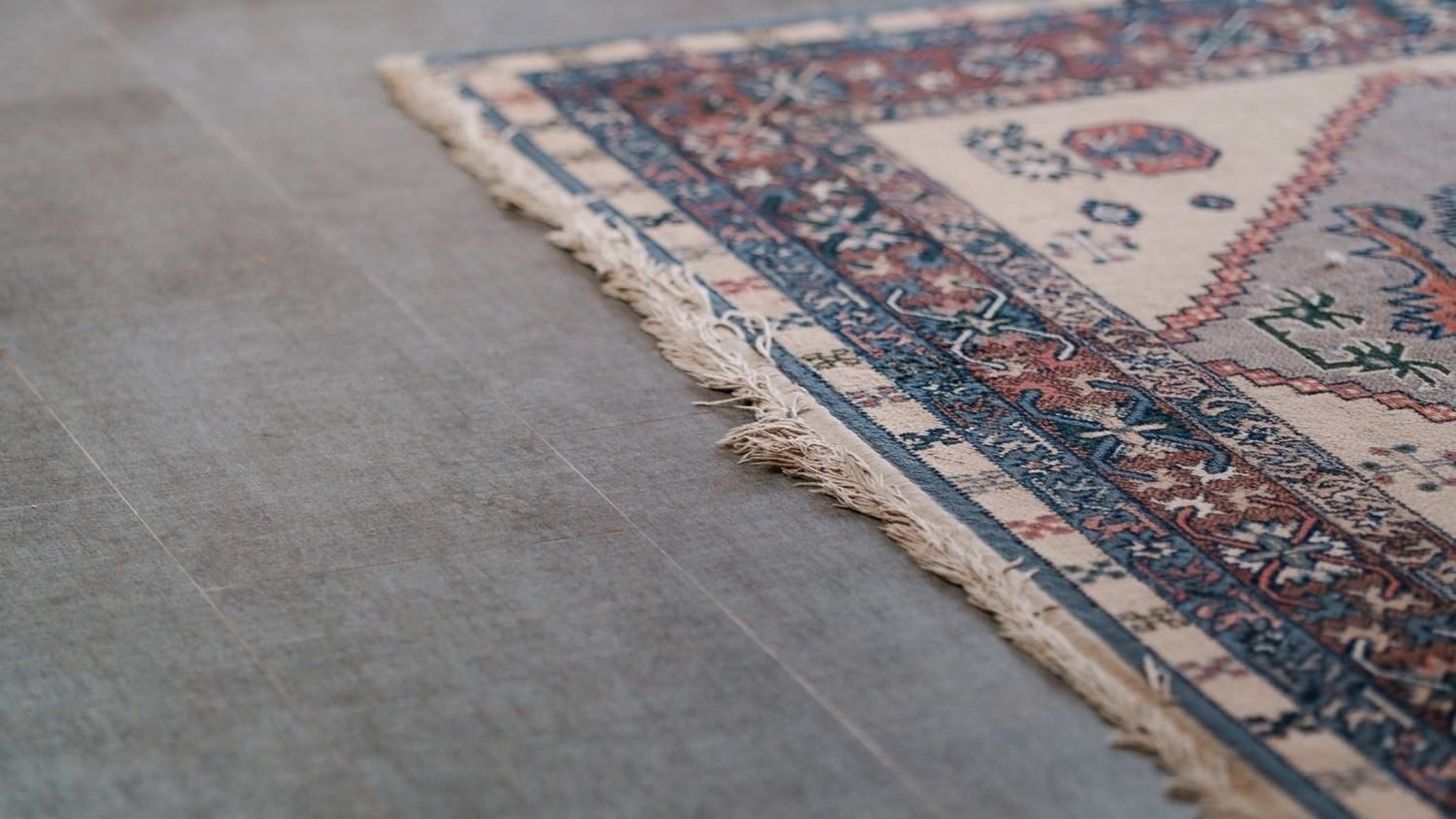
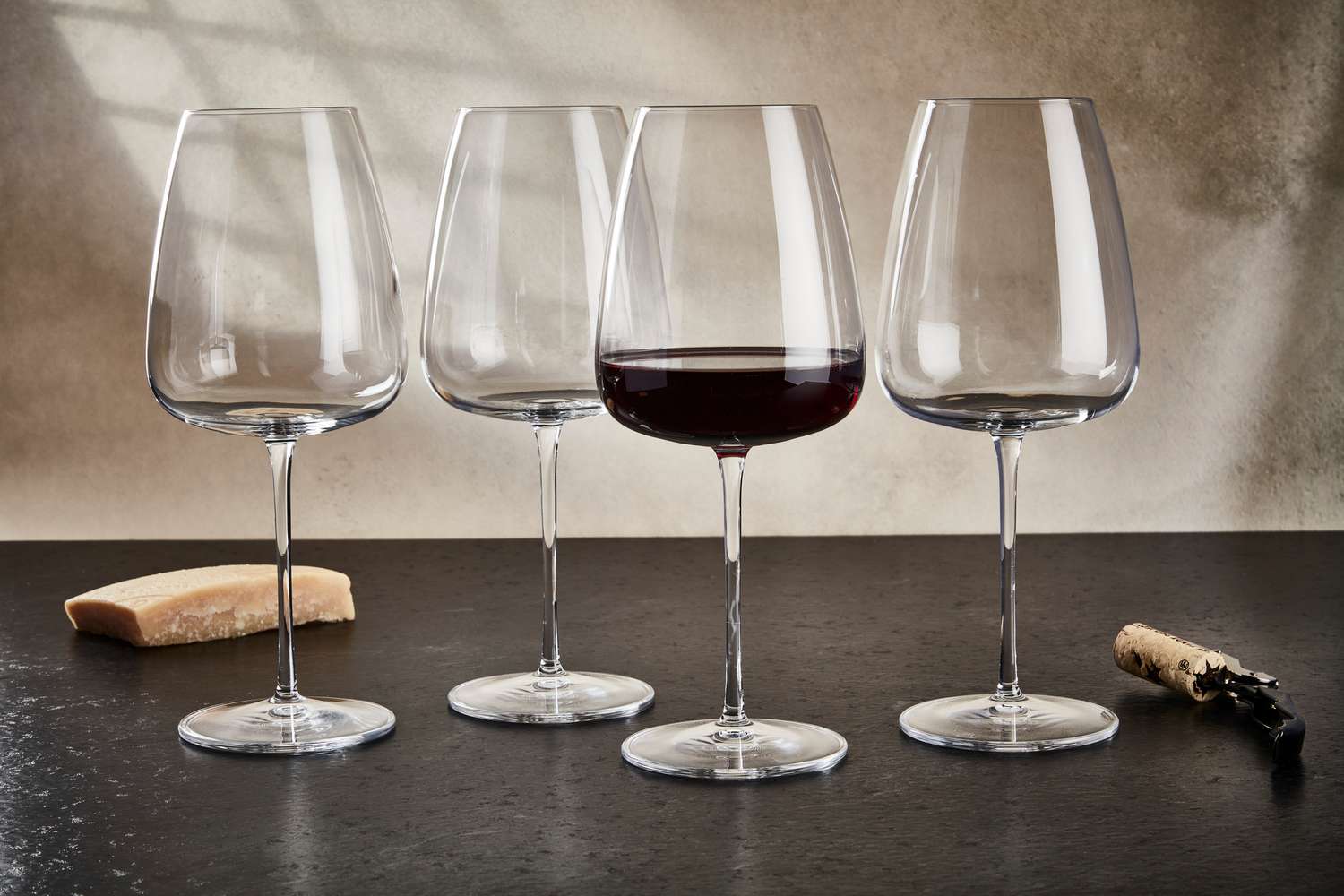


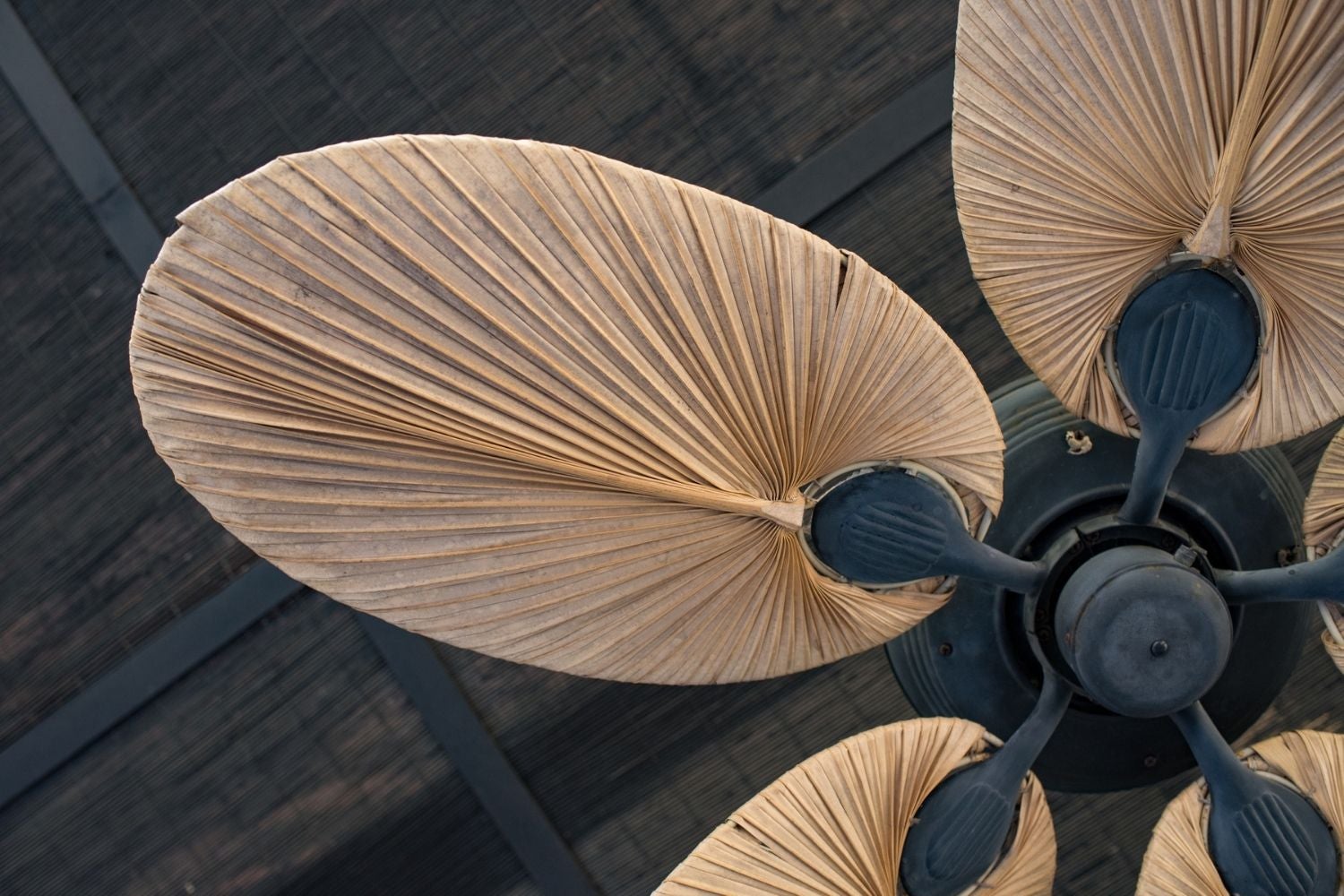
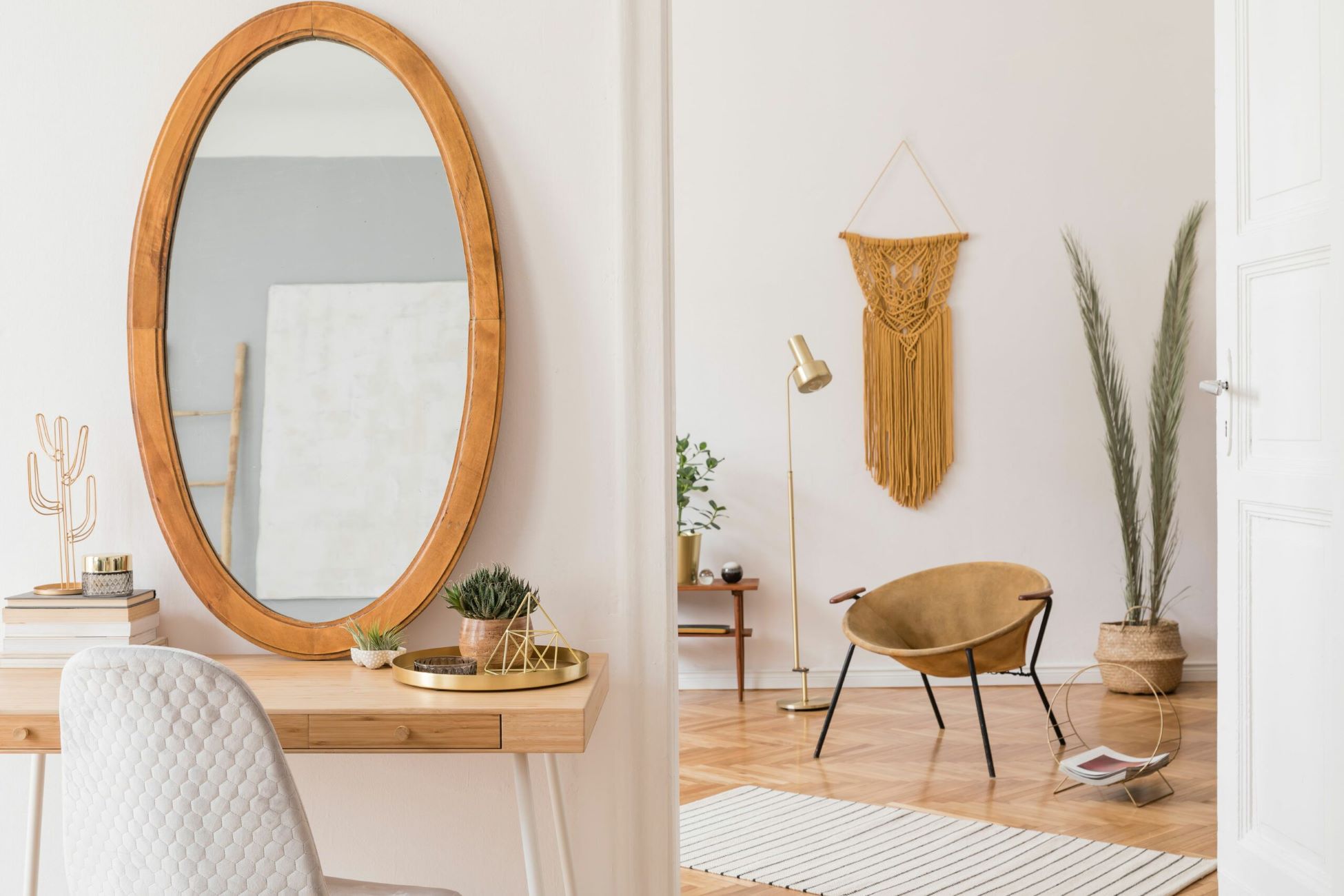



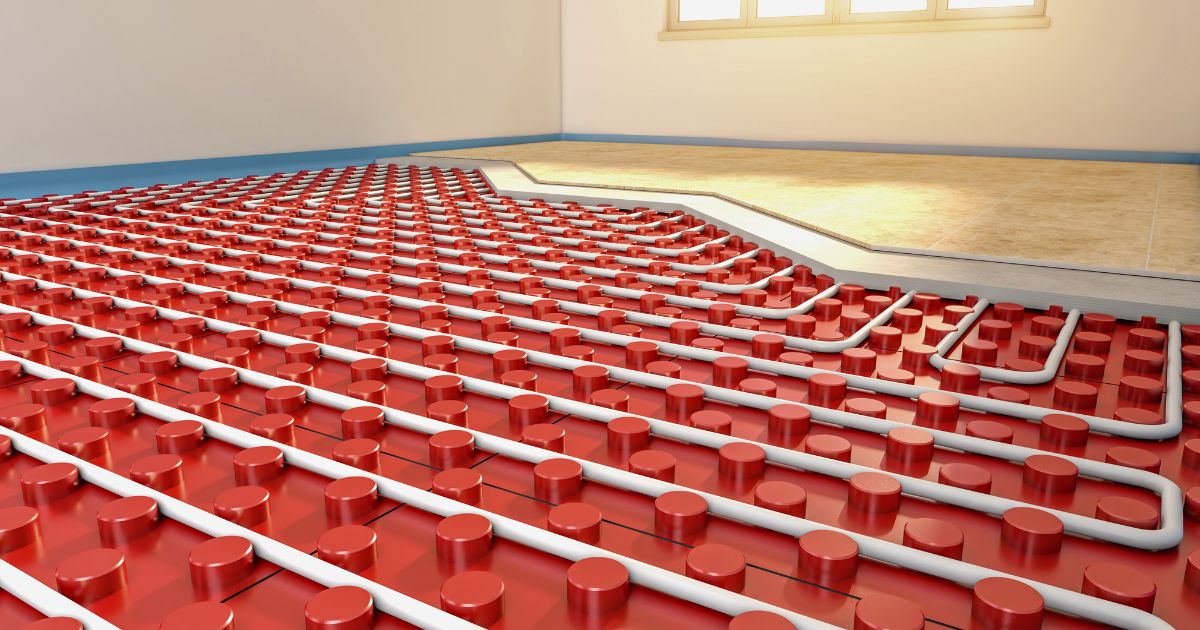


0 thoughts on “Where Were Pillows Invented”